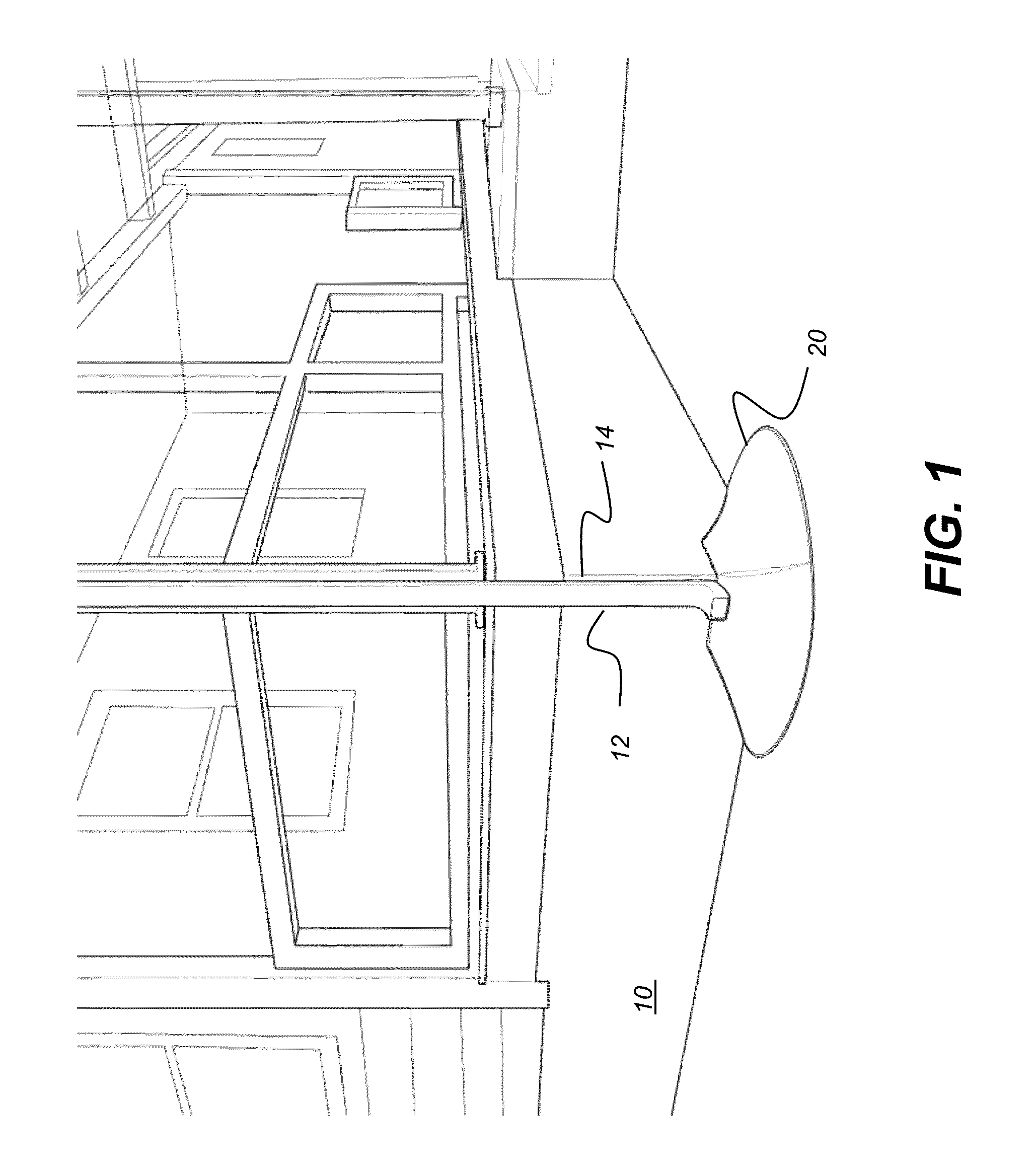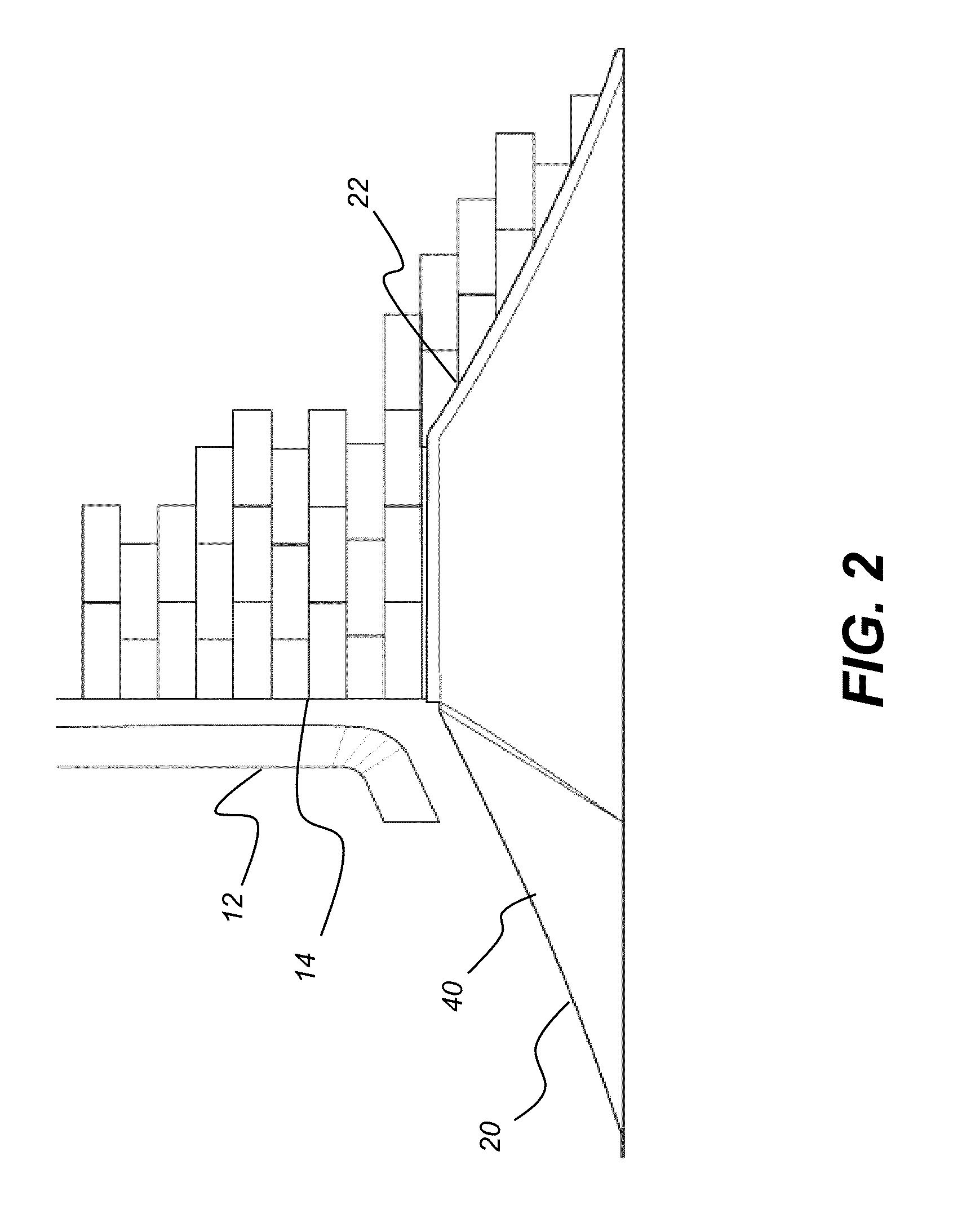Rain diverter
- Summary
- Abstract
- Description
- Claims
- Application Information
AI Technical Summary
Benefits of technology
Problems solved by technology
Method used
Image
Examples
Example
[0031]The following is a detailed description of the preferred embodiments of the invention, reference being made to the drawings in which the same reference numerals identify the same elements of structure in each of the several figures.
[0032]Where they are used, the terms “first”, “second”, and so on, do not necessarily denote any ordinal or priority relation, but may be used for more clearly distinguishing one element or time interval from another.
[0033]The term “exemplary” indicates that the description is used as an example, rather than implying that it is an ideal.
[0034]In the context of the present disclosure, the term “unitary” has its standard connotation meaning formed in a single piece or unit.
[0035]The term “orthogonal” or “substantially orthogonal” describes a relationship of two structures that are at a 90 degree (+ / −6 degree) angle with relation to each other.
[0036]In the context of the present disclosure, the term “rigid” is used to indicate a structure with sufficie...
PUM
 Login to View More
Login to View More Abstract
Description
Claims
Application Information
 Login to View More
Login to View More - R&D
- Intellectual Property
- Life Sciences
- Materials
- Tech Scout
- Unparalleled Data Quality
- Higher Quality Content
- 60% Fewer Hallucinations
Browse by: Latest US Patents, China's latest patents, Technical Efficacy Thesaurus, Application Domain, Technology Topic, Popular Technical Reports.
© 2025 PatSnap. All rights reserved.Legal|Privacy policy|Modern Slavery Act Transparency Statement|Sitemap|About US| Contact US: help@patsnap.com



